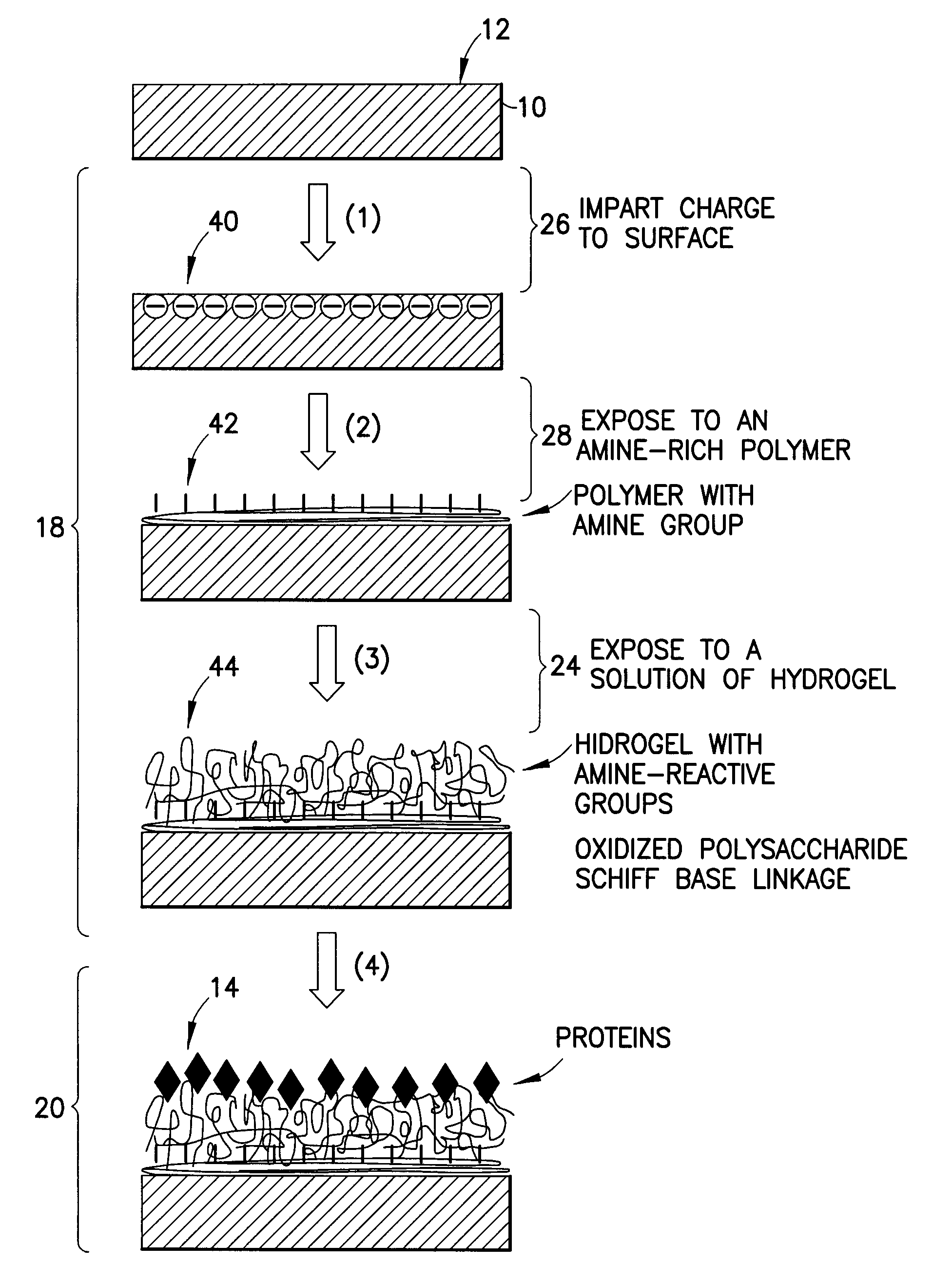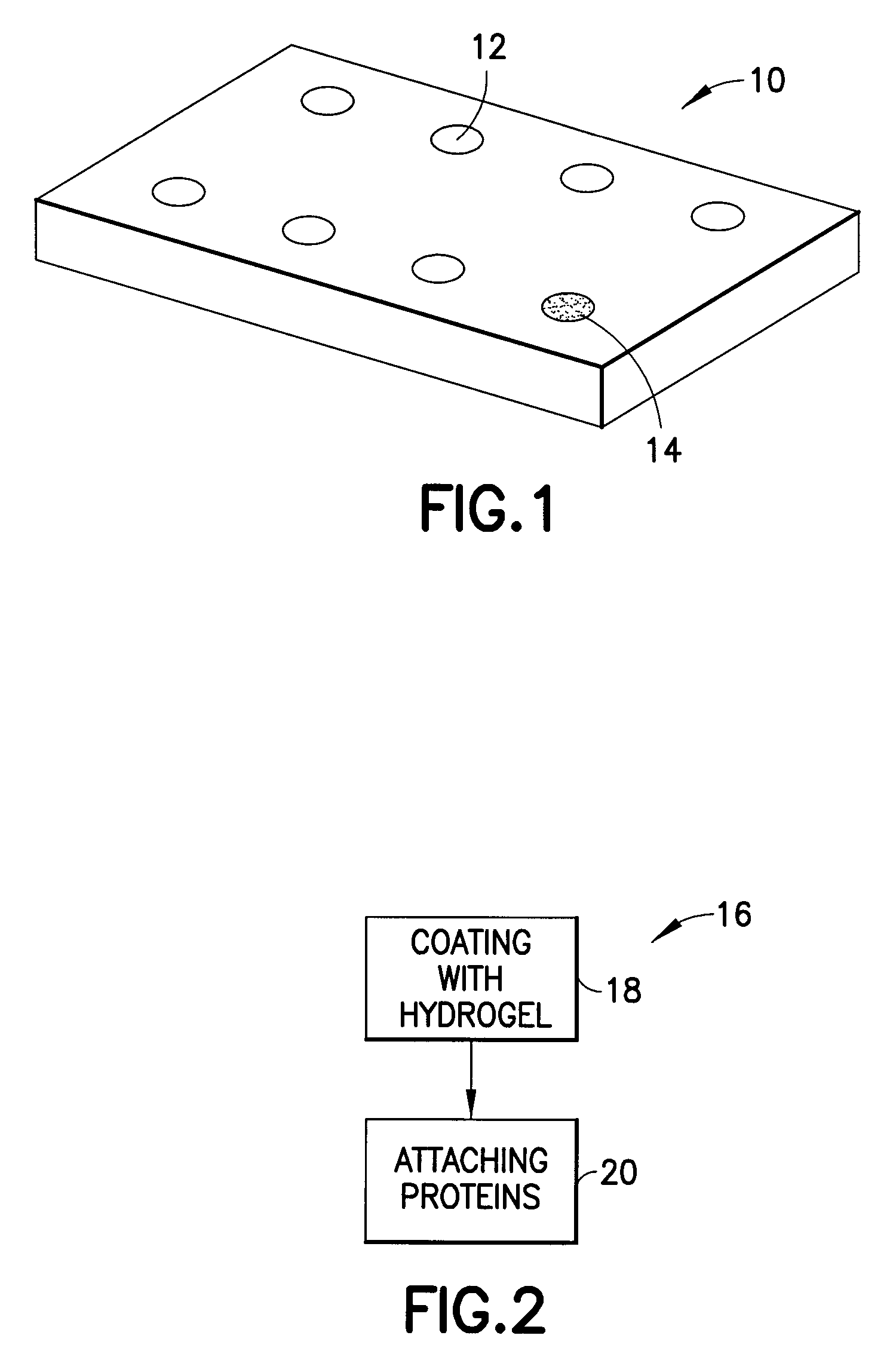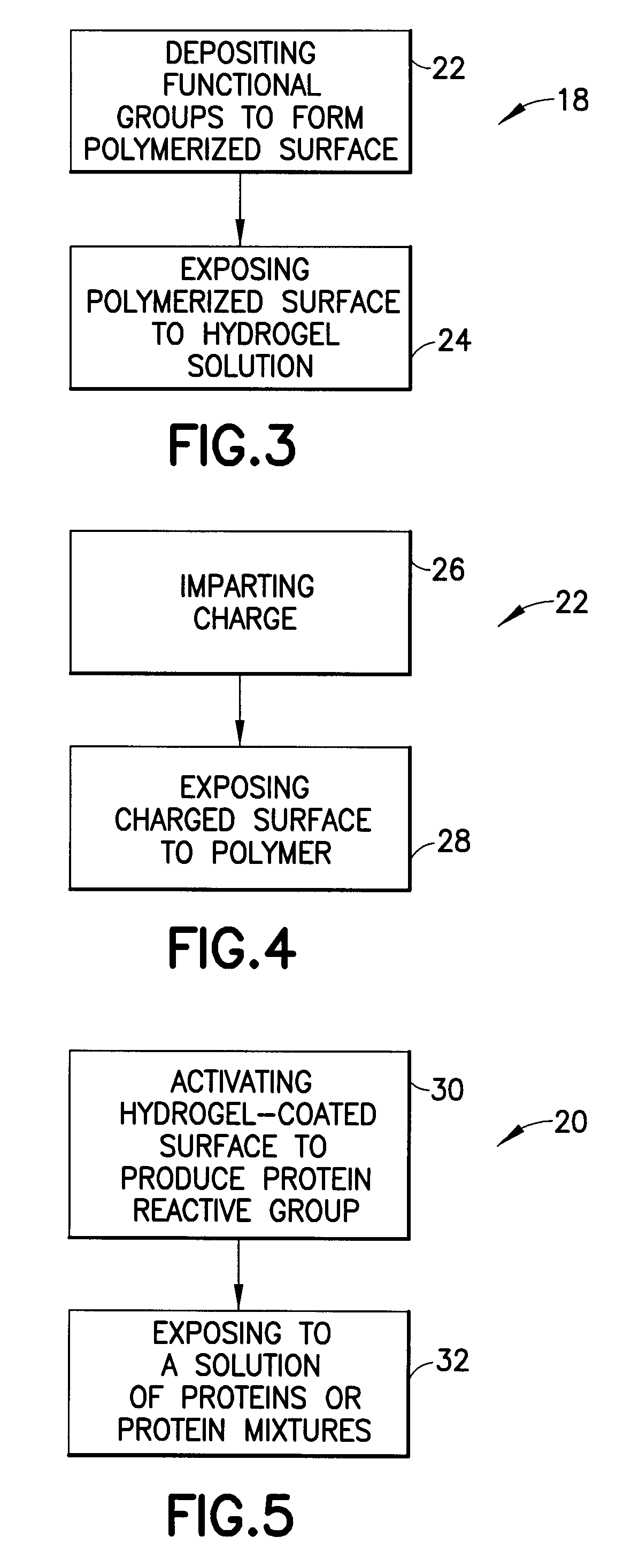Cell culture surfaces having hydrogel supported proteins
a technology of hydrogel and protein, applied in the direction of analytical instruments, laboratory glassware, instruments, etc., can solve the problems of bare plastic surfaces, polystyrene surfaces, passive coating, etc., and achieve the effect of improving cell culture surfaces
- Summary
- Abstract
- Description
- Claims
- Application Information
AI Technical Summary
Benefits of technology
Problems solved by technology
Method used
Image
Examples
Embodiment Construction
[0009]With reference to FIG. 1, a vessel 10 is shown, which initially includes an, untreated polymeric surface 12, which may be treated with the method herein to define an improved cell culture surface 14.
[0010]The polymeric surface 12 may be defined on a vessel 10 of any known configuration, such as a test tube, vial, flask,etc. Preferably, the polymeric surface 12 is the surface of a multiwell plate. For illustrative purposes, the vessel 10 shown in FIG. 1 is a multiwell plate. More preferably, the polyrmeric surface 12 is a surface of a well of a multiwell plate. It is further preferred that the multiwell plate conform to conventional multiwell plate standards (e.g., the Standards of the Society of Biomolecular Screening) so as to be usable in drug assay handling equipment (e.g., high throughput screening (HTS) equipment). The multiwell plate can be formed with any number or arrangement of wells (e.g., 96 (8×12) wells).
[0011]The term “polymeric surface” as used herein refers to a...
PUM
| Property | Measurement | Unit |
|---|---|---|
| polymeric | aaaaa | aaaaa |
| charge | aaaaa | aaaaa |
| adhesion | aaaaa | aaaaa |
Abstract
Description
Claims
Application Information
 Login to View More
Login to View More - R&D
- Intellectual Property
- Life Sciences
- Materials
- Tech Scout
- Unparalleled Data Quality
- Higher Quality Content
- 60% Fewer Hallucinations
Browse by: Latest US Patents, China's latest patents, Technical Efficacy Thesaurus, Application Domain, Technology Topic, Popular Technical Reports.
© 2025 PatSnap. All rights reserved.Legal|Privacy policy|Modern Slavery Act Transparency Statement|Sitemap|About US| Contact US: help@patsnap.com



